Physical Address
304 North Cardinal St.
Dorchester Center, MA 02124
There is little accommodation for the loss of elbow motion from adjacent joints, and extremity function is severely compromised after elbow fusion. As such, elbow arthrodesis is a procedure that is largely avoided even in the most complex clinical scenarios. The indications are currently limited to unsalvageable cases of sepsis, neoplasms, severe bone loss after multiple arthroplasties, flail instability, or high-energy trauma with no potential for joint reconstruction a
a References .
( Box 115.1 ). Studies have shown that increased shoulder motion cannot compensate for loss of elbow motion ( Fig. 115.1 ). Biomechanical and clinical studies have demonstrated that compensatory spinal column and wrist motions may be used to improve function after elbow arthrodesis but are quite limited. In addition, ipsilateral shoulder disease, wrist disease, or bilateral elbow disease increases the challenges of elbow arthrodesis and may even further limit elbow arthrodesis as an option. Given the limitations of elbow fusion, most elbow arthrodesis reports are seen in the setting of military conflict or severe civilian trauma. Spontaneous fusion does occur as an extreme form of ankylosis, and in such cases may obviate the need for surgical fusion if the patient is satisfied ( Fig. 115.2 ). The consideration of alternatives to elbow arthrodesis should be exhausted as arthrodesis is effectively definitive and only a few case reports of reversal to total elbow arthroplasty have been documented (see Chapter 98 ).
Tuberculosis
Osteomyelitis/sepsis
Flail elbow
High-energy trauma
Severe war injuries
Multiple failed arthroplasties
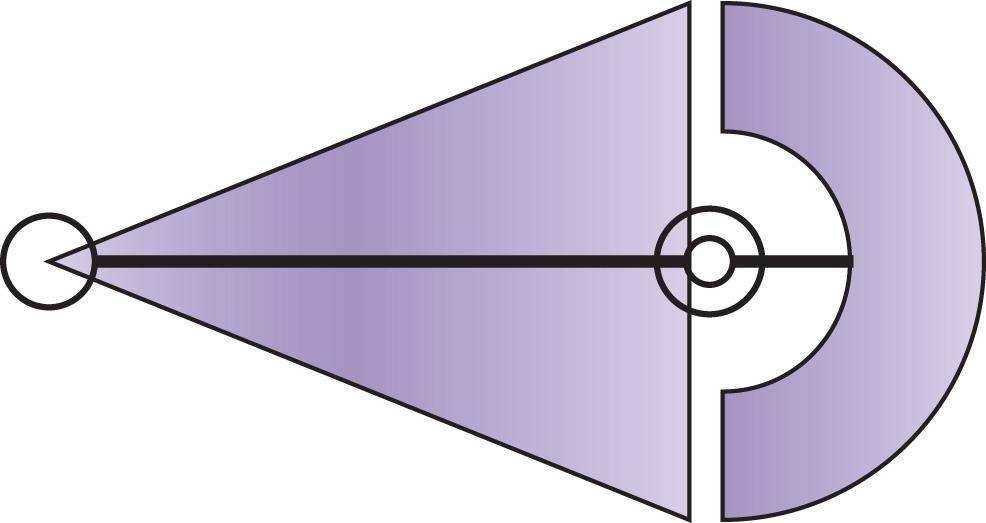
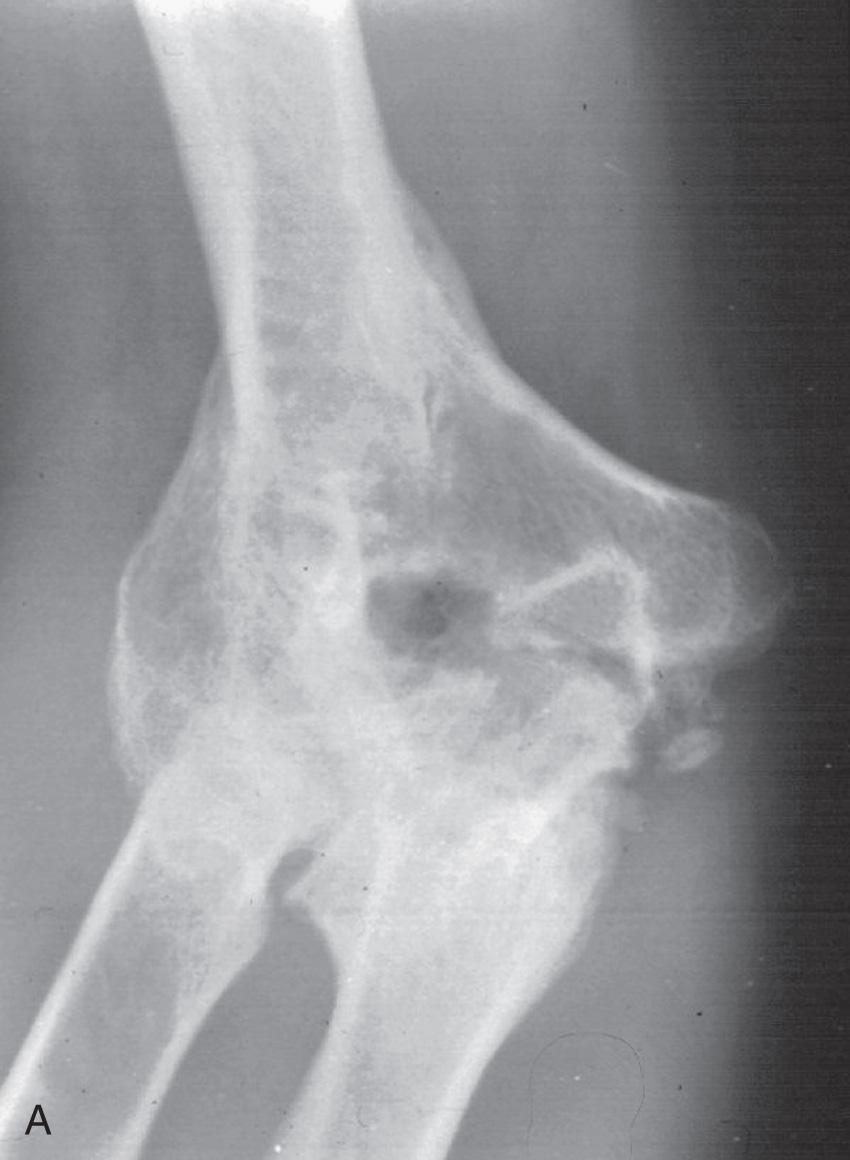
The optimal position for fusion has been evaluated in a number of studies, and 90 degrees of flexion remains the preferred position in most series, although some advocate flexion of up to 110 degrees. The angle of arthrodesis should consider the patient's planned use of the extremity, contralateral extremity function, and lower extremity function. Ninety degrees of flexion provides the optimal position for strength of the hand and wrist for younger patients seeking a return to manual labor. Arthrodesis at 30 to 45 degrees may be considered in patients who require extension for specific work functions such as computer typing and for patients with lower extremity dysfunction (bilateral lower extremity amputees and paraplegic patients) that may transfer through their elbow arthrodesis extremity. Bilateral fusions should be done with the dominant extremity in slight flexion (90 degrees) for eating and lifting activities and the nondominant extremity in more extension (30- to 60-degree range) to facilitate self-care. The choice of the arthrodesis angle is often ultimately an individualized decision made with the patient to provide the optimal angle of use. In chronic cases, hinged elbow braces can be trialed preoperatively in different angles of flexion to identify the optimal position before surgery.
The condition is most frequently encountered in military populations because of the high-energy contaminated injuries associated with combat that limit reconstructive options. Fusion is a salvage operation in these circumstances with a functional goal of providing a painless, stable support for a functional hand that can assist with activities of daily living. Upper extremity amputation, often the other salvage surgical option, has been associated with high complication rates and poor outcomes (see Chapter 120 ). Several military series have shown successful arthrodesis with the use of unilateral or circular external fixation. External fixation provides an ability to achieve compression and stability while avoiding the use of implants in cases complicated by infection or a poor soft tissue envelope.
Bilic et al. reported achieving union with a single operation in seven of nine war injuries at an average of 6 months with unilateral external fixation and a single compression screw. Sheean et al. reported on five combat-related blast injuries treated with fusion with a circular external fixator. In the two series, 20% to 40% of patients required a revision operation to achieve arthrodesis. Both series showed a moderate to high satisfaction rate and low pain scores at the final follow-up.
Multiple techniques have been attempted. Early efforts used limited fixation with isolated screws for compression often used for the treatment of tuberculosis. Compression plate osteosynthesis quickly became the most commonly preferred technique, with markedly improved rates of fusion. Steindler described a single tibial cortical graft secured to the ulna. Alternative techniques have included external fixation, external fixation with limited internal fixation, and external fixation with compression plates. The use of external fixation and gradual compression is particularly useful for military injuries with severe destruction of both bone and soft tissue.
Steindler described a single posterior tibial cortical graft keyed into the olecranon for fusion ( Fig. 115.3A ). Brittain developed a technique of crossed grafts through the elbow joint (see Fig. 115.3B ). Noting that gravitational forces tended to compress the ends of the graft, he believed that the crossing of the grafts was important. Koch and Lipscomb have described a modification of this technique in which a tibial graft is placed through a large drill hole in the humerus and ulna, supplemented by cancellous grafts. Staples used a corticocancellous iliac graft through the posterior portion of the elbow and oblique humeral and olecranon intraarticular resection (see Fig. 115.3C ).
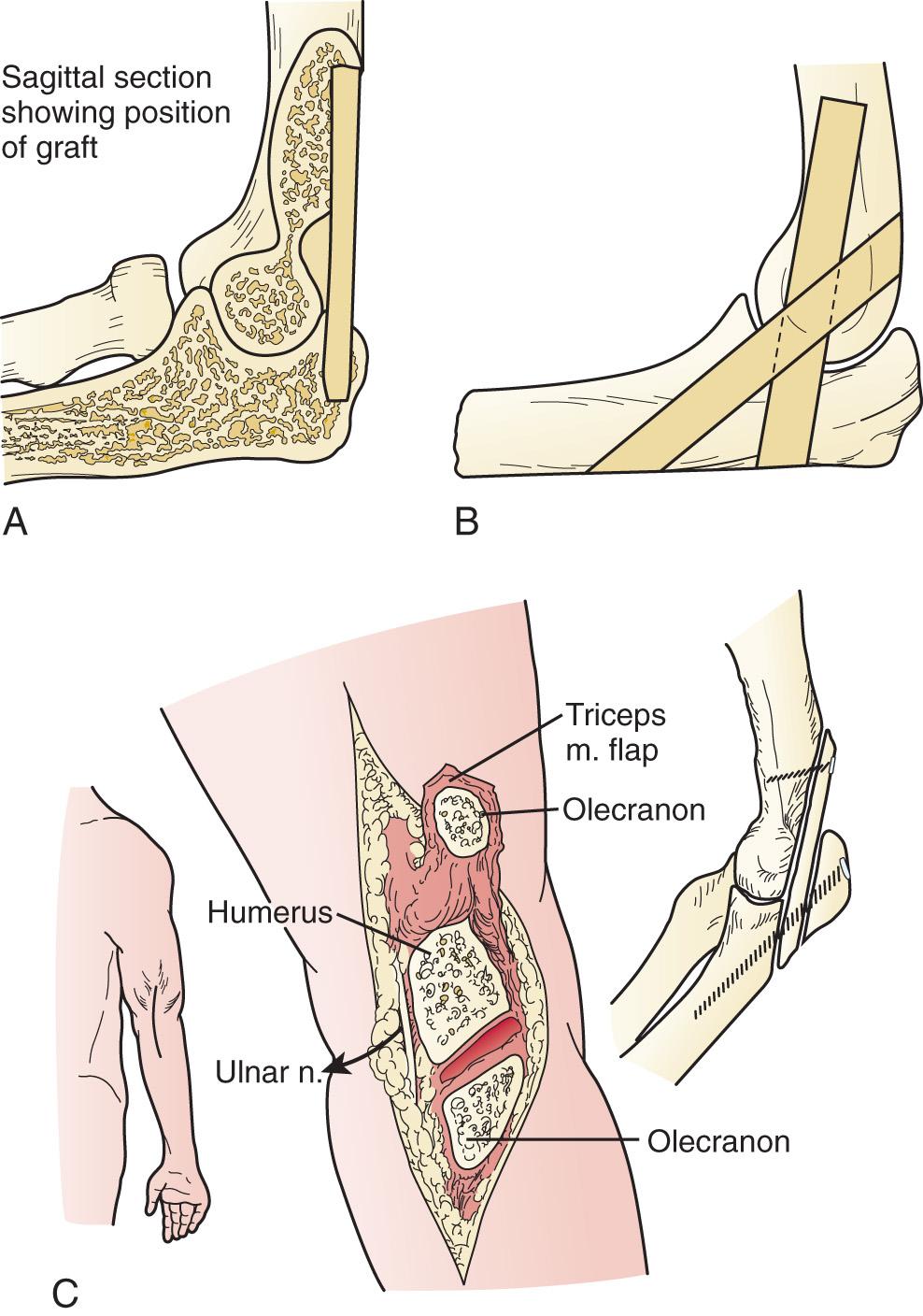
For posttraumatic painful loss of motion we have used limited screw compression fixation. The procedure involves partial débridement of remaining articular surfaces and compression screw fixation without grafts ( Fig. 115.4 ). The traditional AO technique can be used with an axial plane step cut, or alternatively Kovack et al. described the use of a step cut in the coronal plane with lag screw fixation to increase the surface area for healing ( Fig. 115.5 ). Others subsequently reported on similar techniques. For active draining sinuses due to tuberculosis, Arafiles has described a technique that locks the olecranon in the humeral fossa and stabilizes it by screw fixation.
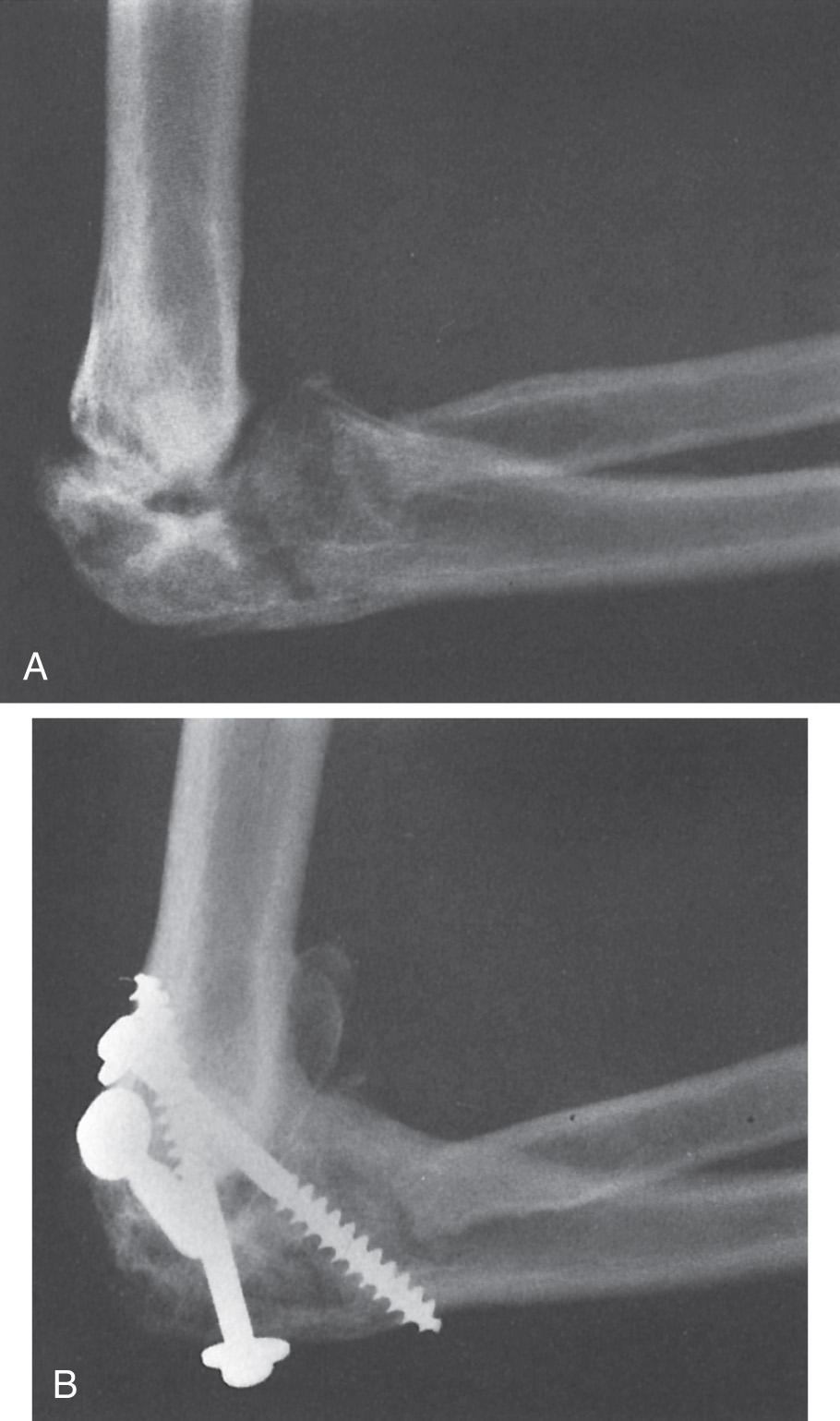
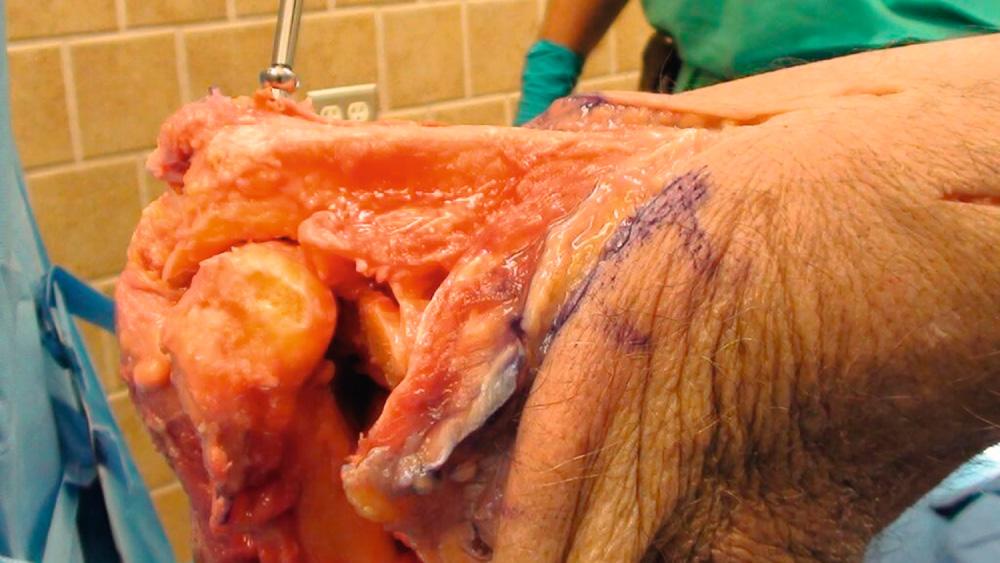
Become a Clinical Tree membership for Full access and enjoy Unlimited articles
If you are a member. Log in here